- Home
- Bill Bryson
The Road to Little Dribbling Page 5
The Road to Little Dribbling Read online
Page 5
‘Actually it is,’ my companion told me. ‘The rule is that bulls can be placed in fields with public rights of way as long as they are kept with beef cows and not dairy cows.’
I was of course bewildered by this. ‘Why one and not the other?’ I asked.
‘No idea. But the real danger,’ he went on, ‘is cows. Cows kill a lot more people than bulls.’
Whatever is the next level beyond pained incredulity is the level I reached now. For years I had been striding boldly through herds of cows in the belief that they were the one group of animals larger than a chicken that I could intimidate with the shake of a stick, and now this was being taken away from me.
‘You’re kidding,’ I said again.
‘Afraid not,’ he responded in the solemn tone of someone with experience in the matter. ‘Cows attack a lot.’
The next day I did the one thing you should obviously never do. I looked for more information on the internet. My informant was right. Walkers in Britain, it seems, are killed by cows all the time. Four people were fatally trampled in one eight-week period in 2009 alone. One of these unfortunates was a veterinarian out walking her dogs on the Pennine Way in Yorkshire. This was a woman who understood animals and liked them, probably had treats for cows in her pocket – and they still trampled her. More recently, a retired university lecturer named Mike Porter was trampled to death by an angry herd – yes, angry – in a field near the Kennet and Avon Canal in Wiltshire, a place where I had been walking only the year before. ‘It looked like they wanted to kill him,’ one eyewitness breathlessly told the Daily Telegraph. It was the fourth serious attack on walkers in five years just by this one herd.
Now what, you may reasonably wonder, does this have to do with Britain being the right size for a country? Well, stick with me, please. A couple of weeks later I was in Colorado, visiting my son Sam who works in Vail, when I happened to read an article in the Denver Post about a man named Dexter Lewis who had been convicted of going into a bar called Fero’s just before closing time, ordering the bartender and four remaining customers to lie down and then killing them in cold blood as part of a robbery. Now if anyone did anything on that scale in England, it would be front page news across the nation the next morning. But in America a gruesome murder in Denver is unlikely to be news in Memphis or Detroit or anywhere outside Colorado. Those places have murders of their own to be preoccupied with. It wasn’t a particularly big article even in the Denver Post.
This is when it occurred to me that the issue here is not how often bad things happen, but how often they are reported, which is quite a different matter, of course. In America, a cow trampling would never make the national news other than in highly exceptional circumstances. If, let’s say, Dick Cheney was trampled to death by cows (and we can always dream), that would be national news. But if it was just some guy walking his dog in Sodom, Indiana, no one outside Indiana – probably no one outside Sodom County – would hear about it. There could be a national epidemic of cow tramplings and no one would know it because the news wouldn’t travel far enough for trends to become apparent. But in Britain if a single cow tramples a walker anywhere in the country, it will almost certainly make headlines. The story of the veterinarian killed in Yorkshire was reported in all the national newspapers except the Daily Star, and I am guessing that that was only because the people at the Star couldn’t spell veterinarian.
I like being in a country where when cows attack word of it gets around. That’s what I mean when I say Britain is cosy. It is a nice quality for a country to have. The only downside to this is that it means Britons are frightened of things that are never going to happen to them. Cow attacks are actually quite rare. That’s what makes them news when they happen. But because people read about cow attacks at regular intervals, they perceive them as being common.
As an experiment, I asked several British friends this question: ‘What are the chances if you are walking in a field with cows that the cows will attack you?’ Every one of them grew instantly animated, and said something along the lines of ‘Actually, surprisingly good. I read about it in the papers. It happens far more often than you’d expect.’
Ask the same question of an American and he would say: ‘Why would I be in a field with cows?’
We’ll return to this issue in due course, but first let’s pay a visit to Dover.
I know I said at the outset that I was going to avoid the places I went to in Notes from a Small Island, but I felt I just had to look in on Dover when I was so close by. I have a peculiar fondness for the place – or if not fondness exactly, a kind of abiding concern – that I can’t entirely explain. Partly, I suppose, it is because Dover was where I first set foot on English soil, so in a very literal sense it is the place I have known the longest. I spent my first forty-eight hours in Britain there and I quite liked Dover. Of course, I knew nothing else of Britain at that point, but in those days Dover wasn’t at all a bad place. It had cinemas and pubs and restaurants and a busy high street. The endless bustle of the ferry port clearly brought people and commerce to the town. But on every subsequent visit I have made to Dover it has visibly deteriorated. I keep hoping to find the buzzing, prosperous little place I first saw, and instead I am greeted by a sad air of ghostliness and decline.
In Notes from a Small Island, I wrote about arriving late and looking longingly into the windows of a posh hotel on the front, where people were dining in an atmosphere of elegance far beyond anything I could afford. That hotel was the Churchill. About seven or eight years ago, arriving in Dover on the car ferry from Calais, on an impulse I decided to stop at the Churchill for lunch – to treat myself to a little of the high life that I couldn’t afford all those years ago. Well, it was a strange experience. The hotel still strived for an air of poshness, but it was based more on hope than merit. I had the dining room more or less to myself. The menu, instead of being a hefty leatherette book, was just a laminated sheet of the kind you might find in a Little Chef, and it was full of misspellings. I ordered a Caesar salad. When it arrived there was nothing to eat it with.
The waitress saw my look of puzzlement. ‘Do you want some cutlery with that?’ she said.
‘Well, yes,’ I answered. ‘It’s a salad.’
‘I didn’t know if you had your own,’ she said grumpily, as if this were mostly my fault, and flumped off to get some.
The salad was a kind of lettuce soup with some shredded chicken afloat on it. It was a small consolation to know that however long I live and however many other disappointing salads are placed before me, I would never receive a worse one than this. With respect to Caesar salads, life could only get better. I assumed from this experience that I would not venture into the Churchill again, but now I found myself approaching it once more, as if drawn by some masochistic magnetism, hoping against hope that I would find it improved since my last visit. Alas, the Churchill was closed and out of business. Dover’s last touch of elegance is gone. A man walking past with a little dog told me that the Churchill had closed about five years earlier, though another hotel now occupied part of the old premises. I looked around the corner and he was right, of course. The central part of the old hotel was now called the Dover Marina Hotel. It looked awfully quiet. Most things in Dover look quiet these days.
Time appears to be leaving Dover behind. Cheap flights to Europe and the Channel Tunnel are between them slowly killing the ferry business. Hovercraft services to the continent ceased in 2000, and the number of passengers on conventional ferries fell by a third in the following decade, though they seem to have recovered very slightly since then. The loss of business has clearly been a blow to the town, but Dover seems to be doing a pretty good job of its own of running itself down. Not long before my visit, the council installed new benches on the seafront that were designed not to be too comfortable. When asked by the local paper why they had chosen uncomfortable benches, a councillor replied somewhat bewilderingly: ‘If they were too comfortable, we would have the gentlemen and l
adies of the day lounging on them.’ And that is perhaps all you need to know to understand why Dover is dying.
I walked to the old South Foreland lighthouse, which was decommissioned some years ago and is now in the care of the National Trust. For a long time this was the highest light in England, though it was the lofty cliff rather than the building itself that made it so. As lighthouses go, this one is pretty squat. South Foreland was the site of an important but forgotten piece of history. It was there that the first electric light in the world was put to use, way back in 1858, long before Thomas Edison brought us the modern lightbulb. The light at South Foreland was an arc lamp, invented by yet another man about whom almost nothing is known, Frederick Hale Holmes. Holmes’s light was too bright for domestic use but perfect for a lighthouse. The equipment was temperamental and expensive, however, and eventually it was given up as too much bother, but for a decade or so this was the one place in the world where you could see an electric light in operation. About a quarter of a century later, South Foreland made history again when Guglielmo Marconi transmitted the first international radio signal from there to a receiver at Wimereux, near Boulogne, in France.
I first heard of Frederick Holmes and South Foreland when I was researching another book about five years ago, and visited it then. On that occasion, I was one of a party of three or four people who were shown around by a keen Trust volunteer. The volunteer didn’t know much about Holmes or Marconi, but he was a fount of knowledge with respect to the mechanical operation of the light. It took one hundred and ten turns of a crank to give two and a half hours of rotation to the light, he told us, and it took forty seconds for the light to make one complete rotation. We also learned that no two lighthouses within a hundred miles of each other had the same light sequences.
‘Goodness,’ we said appreciatively.
The man showed us banks of batteries and cogs and things like that. The illumination from the lighthouse was one million candlepower, he said. I was so impressed with the equipment that I took a photograph.
He held up a hand like a bodyguard dealing with paparazzi. ‘Photography is not permitted,’ he said.
‘Why not?’ I asked, bewildered.
‘National Trust policy,’ he said.
‘But it’s a lighthouse,’ I pointed out. ‘It’s not the Bayeux Tapestry.’
‘Trust policy,’ he said again, more crisply this time, in the tone of a man who would stab his wife in the eye with an ice pick if head office told him it was policy.
I was about to explain to him that this is why I get so frustrated with the National Trust, because of its irksome sense of its own perfection, but I imagined my wife pinching me by the elbow and leading me towards fresh air and the distraction of a sea view, so I said nothing more. My wife has spent so many years pinching my elbow and leading me away from officious idiots – many of them in the employ of the National Trust, it must be said – that I no longer need her there. It’s become a kind of Pavlovian response.
So I stepped outside, back into a beautiful clear day, and instantly felt much better. France, 20.6 miles off, was clearly – startlingly – visible. You could practically wave to people in Calais. Many of the older English visitors around me eyed the French coast grimly, not at all pleased to realize it was that close. Most watched it warily, as if they thought it might be secretly inching closer, stealing English water.
On this latest visit, however, I arrived to find that the lighthouse was closed, which was probably just as well, all things considered. So I just stood and enjoyed the views. France, I was pleased to note, still seemed to be exactly where I had last left it.
From up here, I could see the shallow smudge of brown that marked the treacherous Goodwin Sands. You wouldn’t think it on such a tranquil day, but this is one of the most historically lethal places on the planet, the site of the greatest concentration of shipwrecks anywhere. More than a thousand wrecks are recorded there. The worst incident was on 27 November 1703 when the biggest storm anyone had ever seen drove fifty ships on to the sandbanks, where they were tipped on their sides and smashed to pieces. More than two thousand men died. The Royal Navy lost 20 per cent of its men that night.
In Devon, Henry Winstanley, designer and builder of the celebrated Eddystone Lighthouse, was by chance on that lonely rock when the storm broke. He had long expressed a desire to be there during a really big storm. He certainly got his wish, but his belief in the building’s impregnability proved to be misplaced. The lighthouse was swept away by winds and waves, killing Winstanley and five others who were there with him.
And on that sobering note, let’s move on to London.
Chapter 4
London
ONE OF THE mysteries of the London Underground these days is whatever became of the trains on the Circle Line. They used to come along every few minutes, but now generally you wait ages. On this particular morning, when our story resumes, a great many of us had been standing on a platform at Gloucester Road station for about twenty-five minutes without any sign of action on the line at all.
‘I remember when trains used to go by here,’ I said brightly to a man standing beside me.
‘Don’t the trains go by here?’ he asked in sudden alarm.
He was an American and was evidently new to London and possibly to humour.
‘I was just joking,’ I said gently and indicated the many people standing on the platform with us. ‘We wouldn’t all be standing here if there weren’t really any trains.’
‘But we are all standing here and there aren’t any trains.’
I couldn’t think of an answer to this, so I didn’t say anything, but instead stared vacantly into space. I used to read the Metro when travelling underground until I realized that staring into space provided about the same level of reward without making my fingers inky.
My new American friend was studying a fully unfolded Underground map. He seemed to be giving up on the Circle Line.
‘Where do I go to get the Piccadilly Line?’ he asked at length.
‘Oh, Piccadilly Line trains aren’t stopping here just now.’
He looked at me narrowly, wondering if this was another of my quips.
‘They’re replacing the elevators, so Piccadilly Line trains aren’t stopping at this station for the next six months.’
‘It’s taking them six months to replace the elevators?’ he said in undisguised wonder.
‘Well, there are two of them,’ I answered in a spirit of fairness. I watched him studying his map. ‘You may also want to know that the Circle Line doesn’t go in a circle,’ I added helpfully.
He looked up with real interest.
‘The trains used to go around in endless circles, but now they all stop at Edgware Road and everybody has to get off one train and get on another.’
‘Why?’ he asked.
‘No one knows,’ I answered.
‘This sure is a screwy country,’ he said.
‘Yes, it is,’ I agreed happily.
Just then a train pulled in and everyone moved forward to board.
‘Well, I hope you have a good trip,’ I said to my new friend.
He got on, but didn’t say thanks or goodbye or anything. I kind of hope he got lost, actually.
I do like the London Underground. Putting the Circle Line trains to one side (which is evidently what London Underground does with them these days), nearly everything else about it is splendid. People forget how bad the Underground was once upon a time. When I first came to Britain, it was dirty, poorly managed and often unsafe. Several stations – Camden Town, Stockwell and Tooting Bec to name but three – were positively dangerous at night. By 1982, fewer than 500 million people a year, a decline of 50 per cent from the early 1950s, ventured into the Underground. The King’s Cross fire in 1987, when thirty-one people died after a discarded cigarette started a blaze in uncleared rubbish beneath a wooden escalator, showed how lamentably undermanaged the Underground had become.
Well, look at it n
ow. The platforms are the cleanest places in London. The service is smooth and reliable. The staff, as far as I can tell, are unfailingly helpful and courteous. Passenger numbers have risen to an astounding 1.2 billion a year, which is more than all the aboveground rail journeys in the country combined. According to Time Out magazine, at any given moment there are 600,000 people on the Underground, making it both a larger and more interesting place than Oslo. I read in the Evening Standard that the average speed of Underground trains is just 21 miles an hour, which doesn’t seem very much (unless you travel regularly by train between Liss and Waterloo, in which case it’s like being on a rocket ship), but it all feels pretty brisk, and to convey such a massive number of people over such an enormous and aged system with rarely a hitch is an extraordinary achievement.
But then that’s the thing about London. It does a lot of things supremely well and gets hardly any credit for it. So let me say right here, I think London is the best city in the whole world. I know it doesn’t have New York’s electricity and edgy dynamism or Sydney’s harbour and sandy beaches or Paris’s boulevards, but it has more of almost everything else that makes a city great – greenery, for one thing. Nobody realizes it, but London is one of the least crowded cities on earth. New York has 93 people per hectare, Paris 83, but London just 43. If London were as densely populated as Paris, it would have a population of 35 million. Instead what it has is parks – 142 of them – and more than six hundred squares. Almost 40 per cent of London is green space. You can have all the noise and bustle of a metropolis, then turn a corner and hear birdsong. Perfect.
London is arguably the biggest city in the world. Not in terms of sprawl – though goodness knows there is plenty enough of that – or number of inhabitants, but in terms of density and complexity and depth of history. London is not just vast horizontally but vast across time. History has left it sumptuously jumbled. It’s not even one city but two – Westminster and the City of London – plus a more or less infinite number of subsumed villages, boroughs, districts, wards, parishes and geographical landmarks that cover the map with quaint and appealing names: Parsons Green, Seven Dials, Swiss Cottage, Barking, Tooting Bec, Chalk Farm, the mysteriously Gallic Theydon Bois. Most of its best-known districts – the West End, Bloomsbury, Whitechapel, Mayfair – have no official existence or formal boundaries. They just are. Politically, London is a loose affiliation of thirty-two borough councils and the Corporation of the City of London, its responsibilities divided among a Greater London Authority, a London Assembly, seventy-three parliamentary constituencies and 624 political wards. It is, in short, a great mess. At the head of it all is Boris Johnson, a man whose bumbling manner, whose very hair, is a monument to disorder. And yet somehow it works. It is a truly great city.

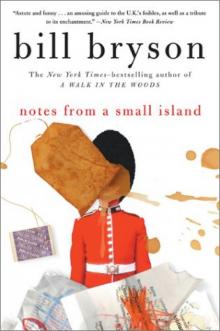 Notes from a Small Island
Notes from a Small Island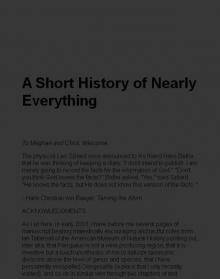 A Short History of Nearly Everything
A Short History of Nearly Everything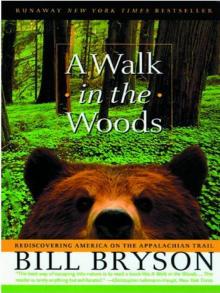 A Walk in the Woods
A Walk in the Woods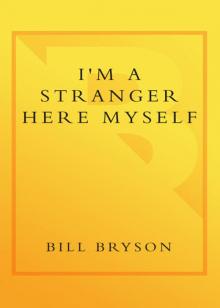 I'm a Stranger Here Myself
I'm a Stranger Here Myself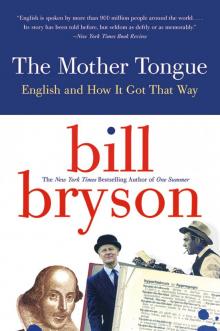 The Mother Tongue
The Mother Tongue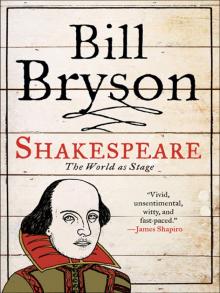 Shakespeare
Shakespeare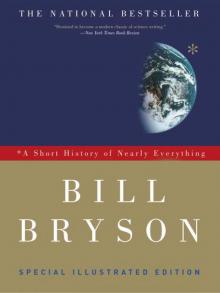 A Short History of Nearly Everything: Special Illustrated Edition
A Short History of Nearly Everything: Special Illustrated Edition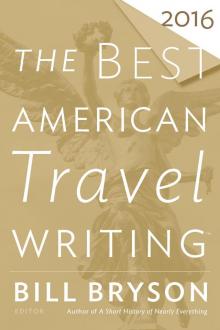 The Best American Travel Writing 2016
The Best American Travel Writing 2016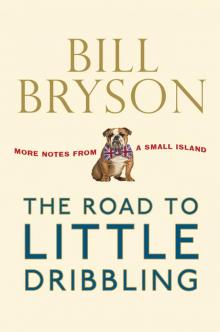 The Road to Little Dribbling
The Road to Little Dribbling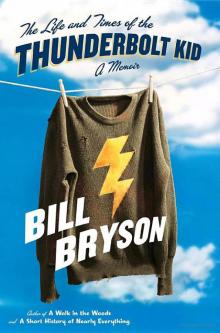 The Life And Times Of The Thunderbolt Kid: A Memoir (v5.0)
The Life And Times Of The Thunderbolt Kid: A Memoir (v5.0)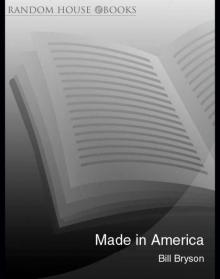 Made In America
Made In America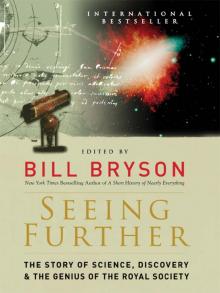 Seeing Further
Seeing Further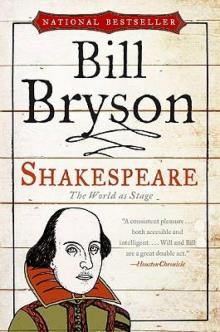 Shakespeare: The World as Stage
Shakespeare: The World as Stage The Life and Times of the Thunderbolt Kid
The Life and Times of the Thunderbolt Kid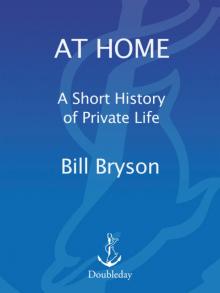 At Home
At Home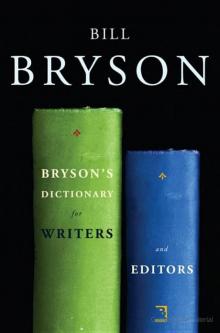 Bryson's Dictionary For Writers And Editors (v5.0)
Bryson's Dictionary For Writers And Editors (v5.0) Neither Here Nor There
Neither Here Nor There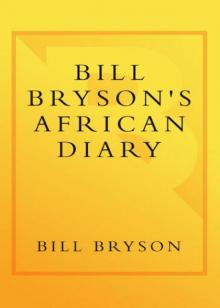 Bill Bryson's African Diary
Bill Bryson's African Diary